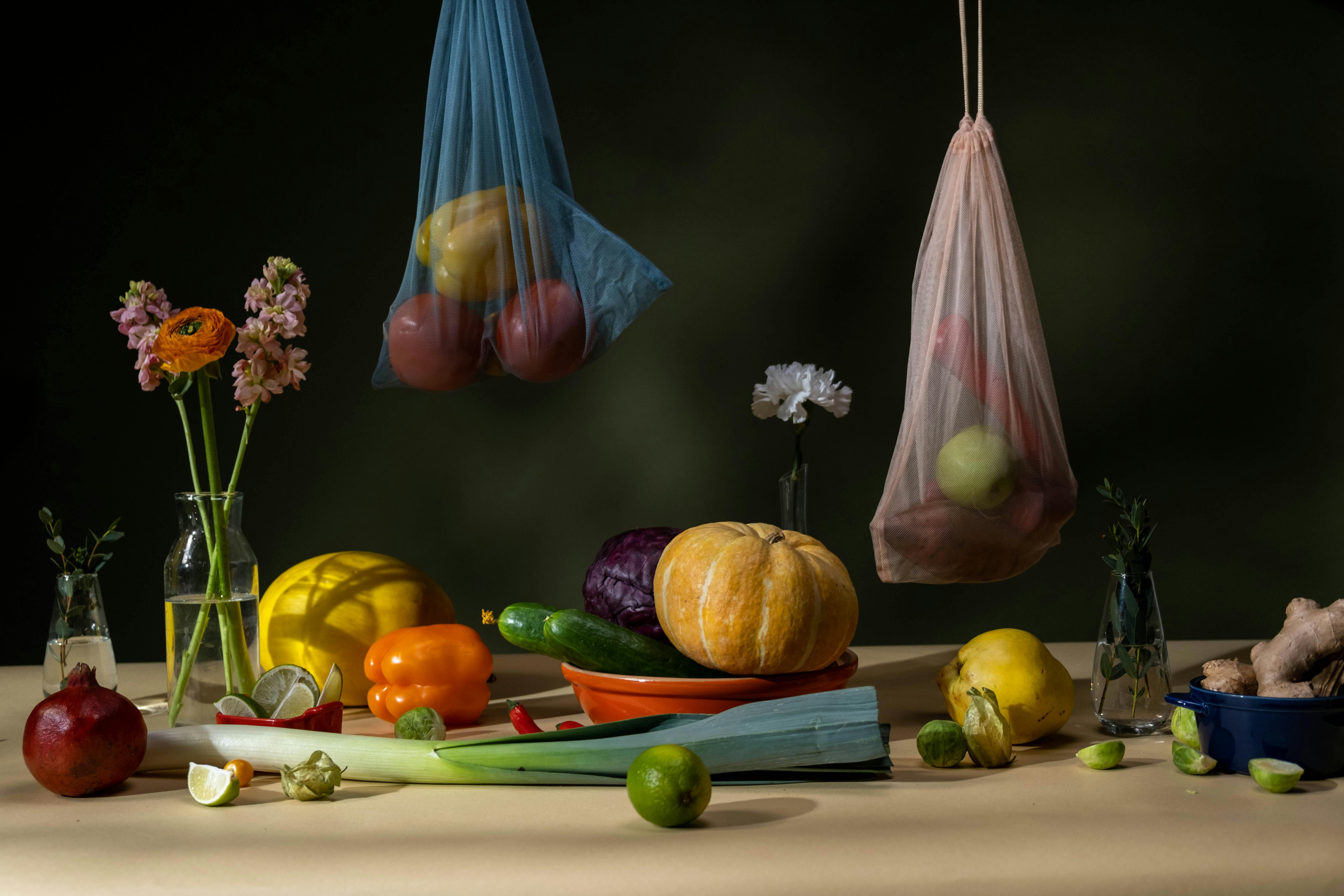Are onions vegetables or fruit? This is a question that has been asked by many people over the years. Onions are an incredibly versatile food and can be used in a variety of dishes. But what exactly are they? Are they a vegetable or a fruit? Let’s take a closer look at onions to find out.An onion is a type of vegetable that belongs to the Allium family. It has a distinctive layered structure and a strong flavor and aroma when it is cooked. Onions have a high nutrient content, including vitamins A, B, C, and K, as well as dietary fiber, calcium, iron, magnesium and phosphorus. They are widely used in cooking to add flavor to dishes and can be eaten raw or cooked in various ways.
Are Onions Vegetables or Fruit?
Onions are a type of vegetable that belong to the Allium family, along with garlic, leeks, and shallots. They are an edible bulb whose layers can be peeled off. Onions are used in a wide variety of dishes for their flavor and aroma, and they can be cooked or eaten raw.
Onions have both botanical and culinary definitions. Botanically speaking, onions are classified as a type of modified stem called a bulb. This means that onions fit the definition of a vegetable rather than a fruit.
Culinary-wise, however, onions can be treated as either a vegetable or an herb. This is because onions add flavor and texture to dishes like vegetables do but also act like herbs by providing aroma and pungency to dishes. As such, onions can be used in both savory and sweet applications such as soups, salads, stews, curries, casseroles as well as cakes and pastries.
In conclusion, onions are primarily classified as vegetables from a botanical standpoint but can also be treated as herbs from a culinary perspective due to their flavor profile.
The Onion Plant
Onion is a widely cultivated species of the genus Allium. It is commonly used as a vegetable and has been cultivated for thousands of years. It is also known as the ‘bulb onion’ or ‘common onion’, and it is used in various dishes to add flavor and texture. Onions are easy to grow and require very little maintenance to produce a good harvest. They are an excellent source of vitamin C, dietary fiber, and other essential nutrients.
Onion plants can be grown from seed or from transplants. When growing from seed, it is important to sow them at the right depth and in the correct soil conditions. The soil should be well-drained, with plenty of organic matter added before planting. It is also important to keep the area free from weeds and other debris that may compete with the onions for water or nutrients.
Onions will need to be watered regularly during the growing season in order to ensure that they receive enough moisture for optimal growth. They will also need to be fertilized every few weeks with a balanced fertilizer in order to ensure that they receive all the necessary nutrients for healthy growth.
Harvesting onions can be done by hand or by using a harvesting tool such as a hoe or spade fork. Onions are best harvested when they are still green, but can also be picked when they have started to turn brown or yellow in color. After harvesting, it is important to store them properly in order to preserve their freshness and flavor for as long as possible.
The onion plant has many uses both culinary and medicinal, making it an incredibly versatile addition to any kitchen garden. With proper care and attention, onions can provide delicious harvests throughout the year – so why not give them a try?
Botanical Classification of Onions
Onions are classified botanically as part of the genus Allium which includes garlic, chives, shallots, and leeks. Allium cepa – commonly referred to as the onion – is the most widely cultivated species within this genus. Onions are thought to have originated in central Asia and were likely among the earliest of cultivated crops. They have been used as a food source and a medicinal plant throughout history in many cultures. The onion has been used for its antiseptic, anti-inflammatory, and expectorant properties.
The onion is a biennial plant that belongs to the family Amaryllidaceae. It is composed of an underground bulb, stem, leaves, and flowers that develop during its second year of growth. The bulb is made up of multiple layers, each containing small hairs called trichomes that contain essential oils which give onions their characteristic aroma and flavor.
Onions are classified into two categories: dry onions and green onions (also known as scallions). Dry onions are harvested when they have reached full maturity and their leaves have dried out completely. They include white onions, yellow onions, red onions, sweet onions, pearl onions, cipolline onions and shallots. Green onions are harvested before they reach full maturity while their leaves are still green.
Onions are an important crop in many parts of the world due to their versatility in cooking as well as their nutritional benefits such as high levels of Vitamin C and dietary fiber. They can be eaten raw or cooked in a variety of dishes or used to add flavor to soups or stews. Onions also contain antioxidants which can help protect against certain types of cancer and other diseases.
Onions
Onions are a staple in many kitchens, and for good reason. They are versatile, flavorful, and can be used in a variety of dishes. Onions have been around for thousands of years and are believed to have originated in either Central Asia or Egypt. They come in different shapes, sizes, and colors, including yellow, white, red, and purple. Onions are also incredibly nutritious – they’re packed with fiber, vitamin C, manganese, folate, iron, calcium and more. Eating onions on a regular basis can help boost your immune system as well as reduce your risk of cancer.
The Vegetable Family
Vegetables are an important part of any balanced diet. Not only do they provide essential vitamins and minerals that our bodies need to stay healthy; they can also help us feel fuller longer between meals. The vegetable family includes many different types of vegetables like leafy greens such as spinach or kale; root vegetables like carrots or potatoes; cruciferous vegetables like cauliflower or broccoli; starchy vegetables like corn or squash; and others such as peppers or mushrooms. Eating a wide variety of vegetables is important for optimal health – each type provides its own unique set of nutrients that our bodies need to stay healthy and strong.

Onions are a Bulbous Root Vegetable
Onions are a bulbous root vegetable that are widely consumed and used in many different dishes. They are known for their pungent aroma and flavor, as well as their medicinal properties. Onions can be eaten raw, cooked, sautéed, or pickled in vinegar. They are a part of the Allium family that also includes garlic and leeks. Onions come in various shapes and colors including red, yellow, and white.
Onions have been used throughout history for culinary and medicinal purposes. Ancient Egyptians were among the first to cultivate onions for food, using them in salads and other dishes. In ancient Greece they were regarded as having healing properties. Onions were also used to ward off evil spirits by Egyptians, Greeks, Romans, and Native Americans.
Onions contain several vitamins including vitamin C and B6 as well as minerals like iron and calcium. Onions also contain quercetin which is an antioxidant that has anti-inflammatory properties which can help reduce inflammation of the skin and respiratory system when consumed regularly. Additionally onions contain allicin which is an antifungal compound that can help ward off infection from bacteria like E coli or salmonella if eaten raw or lightly cooked.
Today onions are an essential part of many cuisines around the world from French onion soup to Thai curries they add rich flavor to any dish they are included in. They are also incredibly versatile, able to be added to salads, sandwiches or served alone as a side dish or appetizer. Moreover onions can be used in homemade remedies such as cough syrup or sore throat remedies due to their anti-inflammatory properties.
In conclusion, onions are not only a delicious addition to any meal but offer numerous health benefits when eaten regularly. From aiding digestion to helping reduce inflammation they should definitely be included on your grocery list!
Onions as a Fruit or Vegetable?
Onions are a vegetable, but more specifically they are a type of bulb. Onions have been cultivated for thousands of years and are used in many different cuisines around the world. Onions are often used as an ingredient in savory dishes, but they can also be eaten raw or pickled. Onions are low in calories and high in vitamins and minerals, making them an excellent choice for a healthy snack or side dish.
The debate over whether onions should be classified as fruits or vegetables has been ongoing for many years. Technically, onions belong to the Allium genus which also includes garlic and shallots. This genus is classified as a vegetable by most authorities, including the United States Department of Agriculture (USDA). On the other hand, some botanists argue that onions should be considered a fruit due to their sweet flavor and seed-like structure.
When it comes to culinary uses, onions are typically treated like vegetables rather than fruits. They are commonly served alongside other savory dishes such as meats, stews, and soups. However, onions can also be used to make sweet dishes such as onion jam or caramelized onions. This shows that while onions may technically be classified as vegetables by most authorities, they can easily be used in both sweet and savory dishes.
In conclusion, while there is some debate over whether onions should be classified as fruits or vegetables, most authorities classify them as vegetables due to their culinary uses and botanical classification. However, it is clear that onions have both sweet and savory uses which makes them a versatile ingredient in the kitchen!
Nutritional Benefits of Onions
Onions are a healthy addition to any diet. They provide many essential nutrients and have a low calorie content, making them an ideal snack or side dish. Onions are a good source of vitamin C, dietary fiber, folate, and potassium. They also contain small amounts of calcium, magnesium, phosphorus, iron, zinc, and selenium. Onions are also a good source of antioxidants that can help protect your cells from damage caused by free radicals.
In addition to the many vitamins and minerals onions provide, they also contain several phytochemicals that may have beneficial health effects. These include quercetin and sulfur compounds such as allicin. Quercetin is believed to have anti-inflammatory properties and it may help reduce the risk of certain cancers. Allicin is believed to have antimicrobial effects and may help fight off infections.
Eating onions can also help reduce the risk of certain diseases due to their high fiber content. Fiber helps reduce cholesterol levels and can help prevent heart disease and diabetes. Onions are also low on the glycemic index which means they won’t spike your blood sugar levels like some other foods might.
Overall, onions are an excellent addition to any balanced diet due to their high nutrient content and potential health benefits. Adding onions to your meals or snacks can be a great way to get more nutrients without adding extra calories or fat.

Conclusion
Onions have been debated for years, and are still not universally classified as a vegetable or a fruit. Although they are most commonly used as vegetables in cooking, botanically speaking, onions are fruits because they come from a flowering plant and contain seeds. In terms of nutrition, onions offer several vitamins and minerals and can be eaten cooked or raw. Whether you consider onions to be vegetables or fruits, they are an important part of many delicious dishes!
In summary, onions are both a vegetable and a fruit depending on how you define them. Ultimately, it doesn’t really matter whether you classify them as one or the other – what matters is that they are an incredibly versatile ingredient that brings flavour to meals all around the world!



